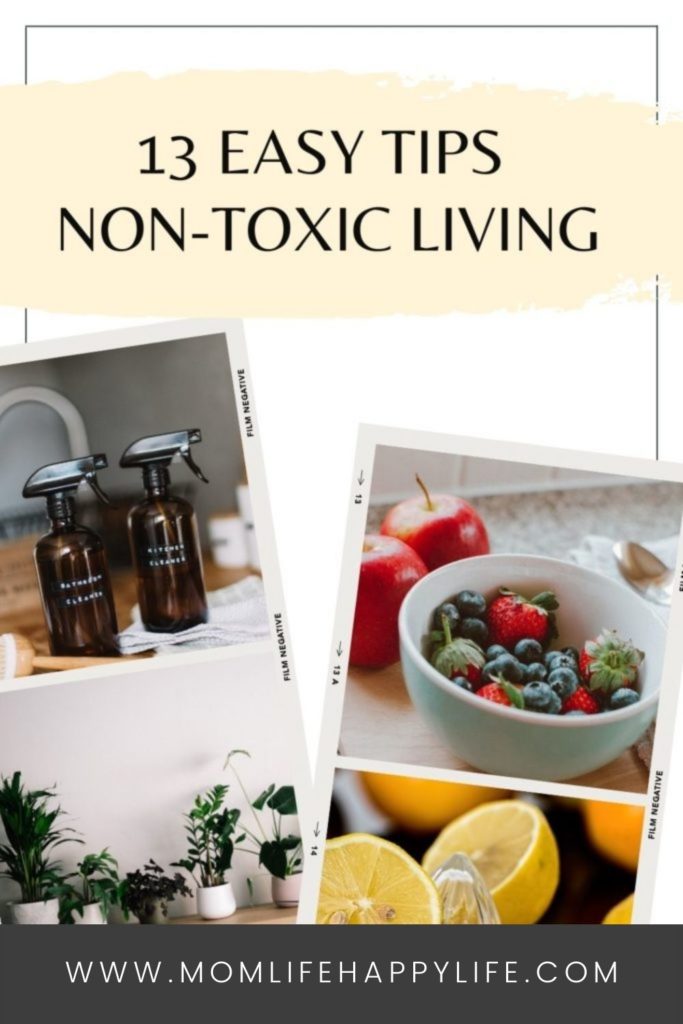
I started my journey to a non-toxic lifestyle about 10 years ago. Since that time I’ve discovered so many tips, tricks, and high-performing non-toxic products. I don’t want to keep all of this knowledge to myself, so I’m excited to share my easy tips for non-toxic living!
My journey began 10 years ago when I was mesmerized by an infomercial for 100% Pure, a high-performing natural makeup and skincare company. To my disbelief, they started talking about harmful ingredients used in popular products. Ingredients that are human carcinogens, hormone disruptors, skin irritants, cause reproductive and developmental disorders.
I couldn’t believe companies could sell products with potentially hazardous ingredients. I assumed if a company was selling a product then it would be safe. However, that is not always the case due to relaxed industry regulations. Most concerning is the long-term effects from years of daily exposure.
From that point on, I started researching the products I was buying and choosing products with healthier ingredients for myself and family. The information I discovered can be found in my easy tips for non-toxic living. Let’s start with tip #1!
Tip #1: Replace products one item at a time
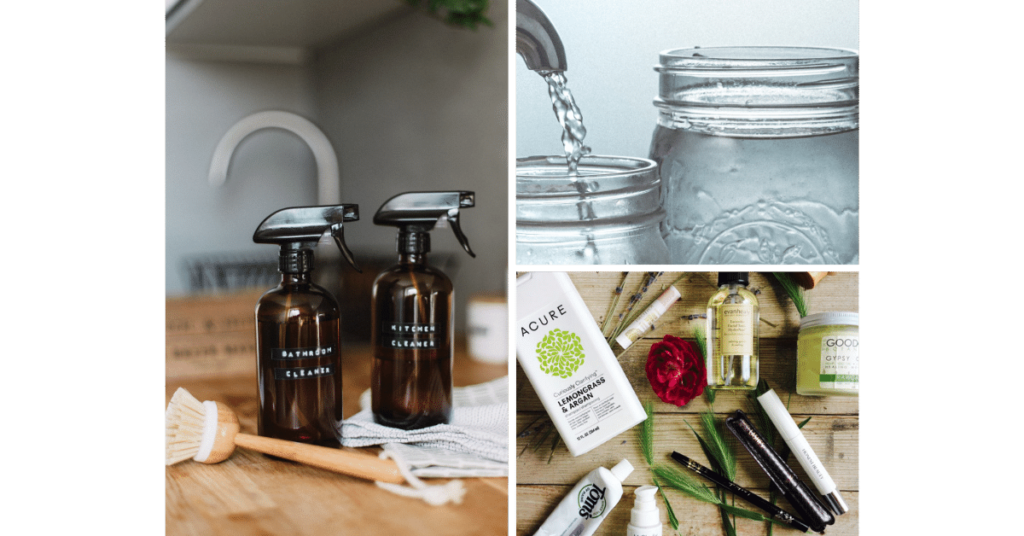
Avoid switching out your products all at once! This can be overwhelming, expensive, and a waste of what you currently have. Use up the products you have and replace it with a healthier option when it’s time to be replaced.
Prioritize the areas of your life and the products that you want switched out to non-toxic options. The main focus areas should be the things going in your body and on your body:
Focus Areas for Non-Toxic Living
- Food
- Water
- Personal Care Products
- Cleaners
- Household items
Tip #2: Purchase Organic if it’s on the “Dirty Dozen” List
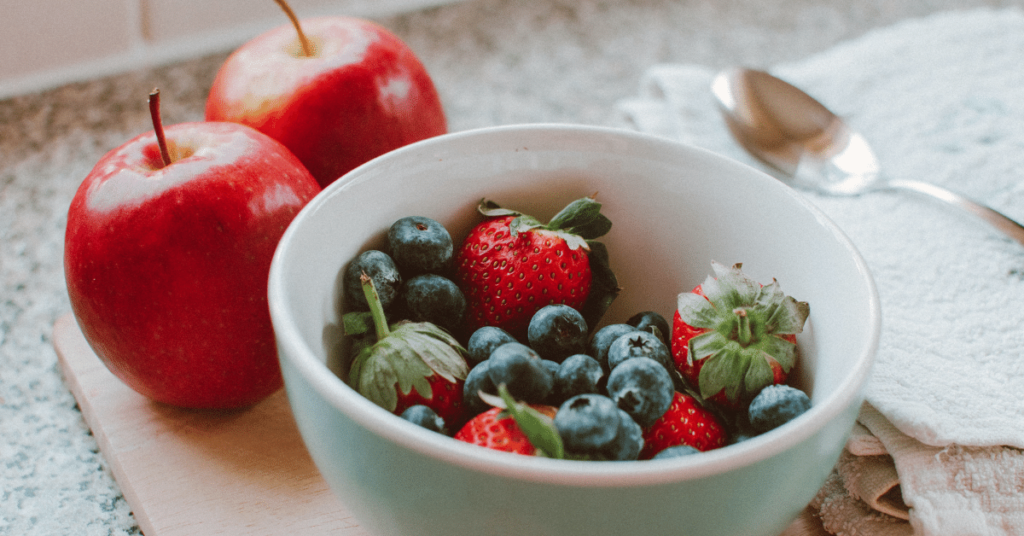
Purchasing organic food is important because it reduces your exposure to harmful pesticides. According to the Environmental Working Group:
“Nearly 70 percent of the non-organic fresh produce sold in the U.S. contains residues of potentially harmful chemical pesticides, according to EWG’s analysis of the latest test data from the federal Department of Agriculture.”
Environmental Working Group
It’s important to reduce your exposure to pesticides since it can negatively affect our health, and the health of children.
“Conventional growers use synthetic pesticides that can damage our brain and nervous system, disrupt our hormones and contribute to cancer. In developing children, pesticide exposure contributes to neurological problems, which impair learning, memory and attention.”
Environmental Working Group
The EWG created the Dirty Dozen and Clean Fifteen list to rank the most and least contaminated food.
Here is their Dirty Dozen list which ranks the foods with the greatest amount of pesticides, these are the products you should try to purchase as organic:
Dirty Dozen List (choose organic)
- Strawberries
- Spinach
- Kale, Collard, Mustard Greens
- Nectarines
- Apples
- Grapes
- Cherries
- Peaches
- Pears
- Bell & Hot Peppers
- Celery
- Tomatoes
Here is the Clean Fifteen List the EWG created, these have the least amount of pesticides, so you could feel more comfortable with not purchasing organic and save yourself some money.
Clean Fifteen List
- Avocados
- Sweet Corn (some are sold as genetically modified, so purchase organic if you want to avoid that)
- Pineapple
- Onions
- Papaya (some are sold as genetically modified, so purchase organic if you want to avoid that)
- Sweet Peas (frozen)
- Eggplant
- Asparagus
- Brocolli
- Cabbage
- Kiwi
- Cauliflower
- Mushrooms
- Honeydew Melon
- Cantaloupe
Tip #3: Filter Your Water
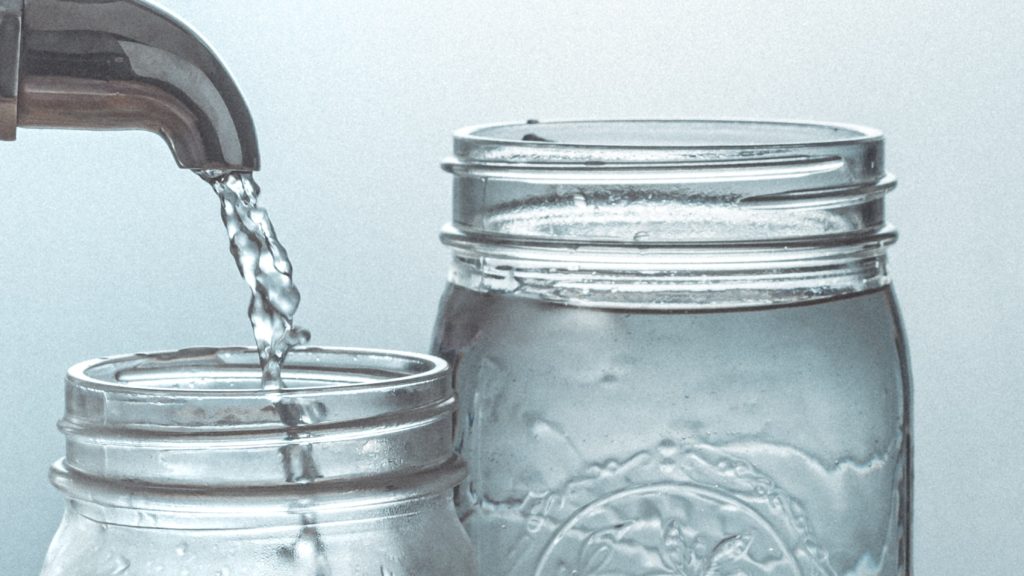
Water is essential so do yourself a favor and get a water filter to reduce the level of contaminants you are drinking. In the United States, the EPA (Environmental Protection Agency) sets standards for drinking water quality and oversees those who implement the standards. Thank goodness for this service! However, according to the EPA’s water filtration guide, you can still expect a small amount of contaminants so it’s good to take precautions to reduce your long-term exposure. Also, filters make your water taste great!
Concerning Water Contaminants
- Lead: Found in drinking water from corrosion of pipes. Lead exposure during childhood is particularly harmful because it’s a neurotoxin which “impairs children’s intellectual development.”
- Nitrates: Comes from groundwater sources that have exposure to fertilizers, livestock manure, and human sewage. According to the EPA’s drinking water contaminant guide, high levels have been attributed to “the blood disorder methemoglobinemia (blue baby syndrome) and have been associated with thyroid dysfunction in children and pregnant women.”
- Arsenic: Comes from natural deposits in the earth. According to the EPA’s drinking water contaminant guide, the long term consumption “has been associated with the development of skin conditions and circulatory system problems, as well as increased risk of cancer of the bladder, lungs, skin, kidney, nasal passages, liver, and prostate. In many cases, long-term exposure to arsenic begins during prenatal development or childhood, which increases the risk of mortality and morbidity among young adults exposed to arsenic long-term.”
- Pesticides: Runoff from farm fields can enter drinking water sources. According to the Environmental Working Group, a heavily used pesticide, Atrazine, “is the most commonly detected pesticide in tap water, at concentrations that can be higher than what the federal legal allows.” EWG notes the harmful effects as “a hormone disruptor that even at low doses affects the human reproductive system, posing the greatest risk during pregnancy and early childhood.”
- PFAS: Man-made “forever” chemicals are used in a variety of industries, and have been in the United States since 1940. The chemical can be found in water usually in the area associated with the industrial and disposal site. Here’s a map of the different sites. The chemical can accumulate in the body over time and according to the EPA “There is evidence that exposure to PFAS can lead to adverse health outcomes in humans. The most consistent findings from human epidemiology studies are increased cholesterol levels among exposed populations, with more limited findings related to: infant birth weights, effects on the immune system, cancer (for PFOA), and thyroid hormone disruption (for PFOS).”
Research Your Water Quality
I highly recommend researching your water source and also testing your water quality, especially for lead. Go here for an easy way to find out about the water quality in your area.
Purchase an Activated Carbon Water Filter
Filters using activated carbon tend to be the least expensive option and come in a variety of options to suit your needs. It’s available as a pitcher, countertop stand, water bottle, faucet-mounted, undersink and whole-house filters. After researching the different types of filters, I went with an activated carbon option since it reduces many common contaminants and it’s affordable.
My personal choice was to go with the Big Berkey filter, their testing states they removed 200 contaminants. Here’s a list of the contaminants removed. I like it because it’s gravity based, removes a high level of contaminants when compared to other less expensive pitcher options, and the filters last for 6,000 gallons so I won’t need to replace them for 5 years based on my water usage.
Check out this blog post to learn more about water filters.
Tip #4: Remove Plastic From Your Kitchen
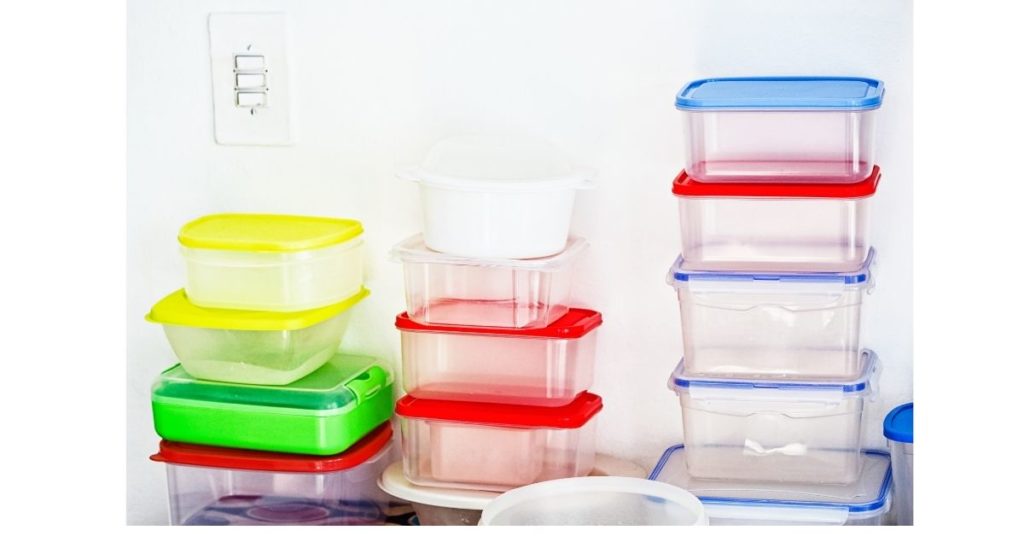
Plastic is created from toxic ingredients. Previously many plastic products contained BPA which stands for bisphenol A. This was frequently found in storage containers, water bottles, food can liners, water supply lines, and dental sealants.
According to Mayo Clinc, studies have shown BPA can seep into food. BPA is a concern because “of the possible health effects on the brain and prostate gland of fetuses, infants and children. It can also affect children’s behavior. Additional research suggests a possible link between BPA and increased blood pressure, type 2 diabetes and cardiovascular disease.”
Now we are familiar with many products being listed as BPA free, yea! However, the National Center for Biotechnology Information (NCBI) states BPA substitutes like BPS and BPF are showing health effects.
So your best bet is to avoid plastic for your food items. Focus on glass, stainless steel, cast iron, and plastic wrap alternatives like Bees Wrap.
Tip #5: Replace Personal Care Products With Healthier Ingredients
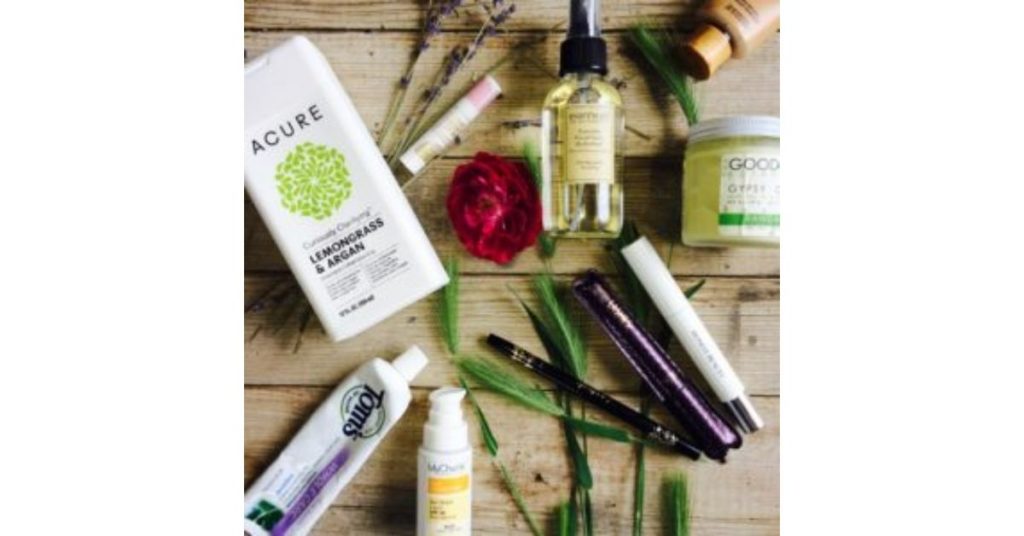
My favorite trusted resource for understanding ingredients to avoid with my personal care products, and finding non-toxic and high-performing products is the Environmental Working Group (EWG) Skin Deep. If you are
Here are the steps I take to switch out my products:
Step 1: Find out which products rank as a low hazard to your health.
You do this by searching EWG’s Skin Deep. It’s a huge database of products where they rate the products based on ingredient safety data – low, medium, and high ratings. Search the database to see how your current products rate. Once I was ready to purchase a new product I used the database as a guide to find products with a low rating.
Check out my post about the best clean beauty apps if you want a simple, on the go way to find non-toxic products, analyze the ingredients, and get recommendations.
Step 2: Search for Product Reviews Before Buying
My favorite place to search for reviews is MakeupAlley and Amazon. There are usually many reviews to go through so you can get a good sense if the product is high performing. I’ve had a lot of success with making my purchases based on reviews. Many of the popular “clean” beauty brands are only available online so most of the time I’ve had to go off of what other people say to help decide what product to purchase and what color to go with.
Step 3: Check the refund policy before buying in-store or online
I’ve had some reactions where my skin became itchy after using, most stores allowed me to return items, but there were some that did not allow this.
If you are interested in DIY beauty, then check out this blog post!
Tip #6: Use Non-Toxic Cleaners
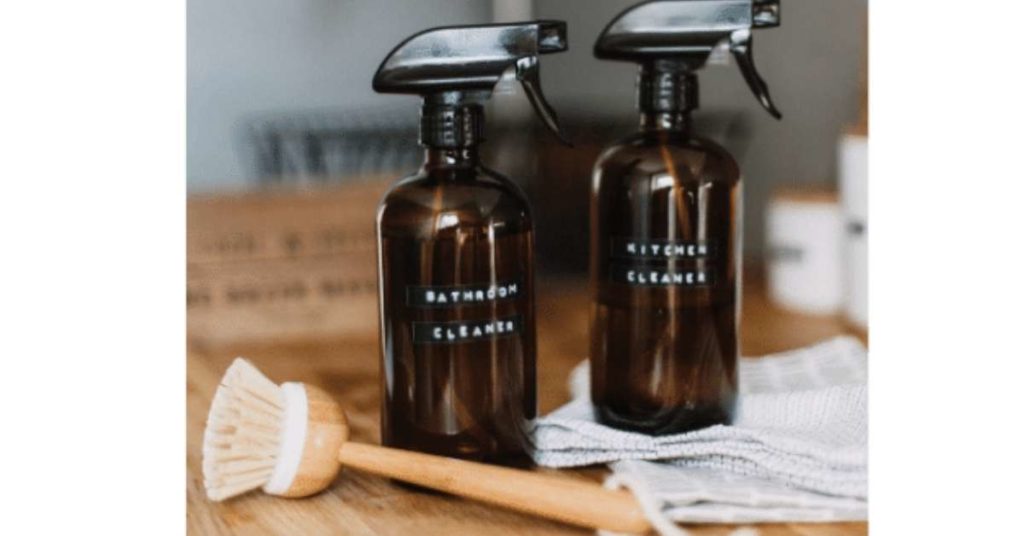
The Environmental Working Group reviewed 2,000 popular house cleaners and found hazardous chemicals in many products. Below are some of concerns they found, and you can find the full list of their findings here:
Some 53 percent of cleaning products assessed by EWG contain ingredients known to harm the lungs. About 22 percent contain chemicals reported to cause asthma to develop in otherwise healthy individuals.
Formaldehyde, a known human carcinogen, is sometimes used as a preservative or may be released by other preservatives in cleaning products. It may form when terpenes, found in citrus and pine oil cleaners and in some essential oils used as scents, react with ozone in the air.
The chemical 1,4-dioxane, a suspected human carcinogen, is a common contaminant of widely-used detergent chemicals.
Ensure you are using a non-toxic cleaner, reference the EWG database to look up products with low ranking hazard scores. You can also create your own cleaners using ingredients you may already have in your kitchen. There are so many recipes out there, I’ll be trying ones from Mama Natural, Environmental Working Group, and Wellness Mama
Tip #7: Open Your Windows & Ventilate the Air

Most of us are familiar with outdoor air pollution, but did you know that indoor air pollution is also a thing?! That’s why it’s important to take some simple steps to purify air in your home.
According to Environmental Protection Agency (EPA) studies:
“Indoor levels of pollutants may be two to five times — and occasionally more than 100 times — higher than outdoor levels. These levels of indoor air pollutants are of particular concern, because most people spend about 90 percent of their time indoors”
EPA
How does indoor air pollution affect human health?
Air pollution health risks can depend on the chemical, how much is in the air, and duration of exposure. There can be short term term exposure like hours or days or long term exposure like years. According to the EPA and MN Dept of Health, the following health effects for exposure may include:
- Eye, nose and throat irritation (short term exposure)
- Headaches, loss of coordination and nausea (short term exposure)
- Dizziness (short term exposure)
- Worsening of asthma symptoms (short term exposure)
- Damage to liver, kidney and central nervous system (years to a lifetime of exposure)
- Cancer (years to a lifetime of exposure)How can I improve the air quality in my home?
How Can I Improve the Air Quality in My Home?
Purify the air in your home by getting the fresh air flowing by opening your windows and ventilate by moving the fresh air around your home with fans. According to the EPA, one of the ways to reduce indoor air pollution is to improve the ventilation by increasing the amount of air coming indoors. Cooking also causes indoor air pollution so use a range hood, fan, or open the windows while you cook.
Other ways to reduce air pollution in your home is to purchase an air purifier. If you are interested in this option, check-out the guide the EPA created. I recently purchased the Levoit air filter. What I like best about it is the filter lasts 6-8 months, it’s quiet, lightweight so you can easily move it around, and it has a sleek design so it’s not an eye sore in your room.
Tip #8: Say Bye Bye to Air Fresheners & Fragrance
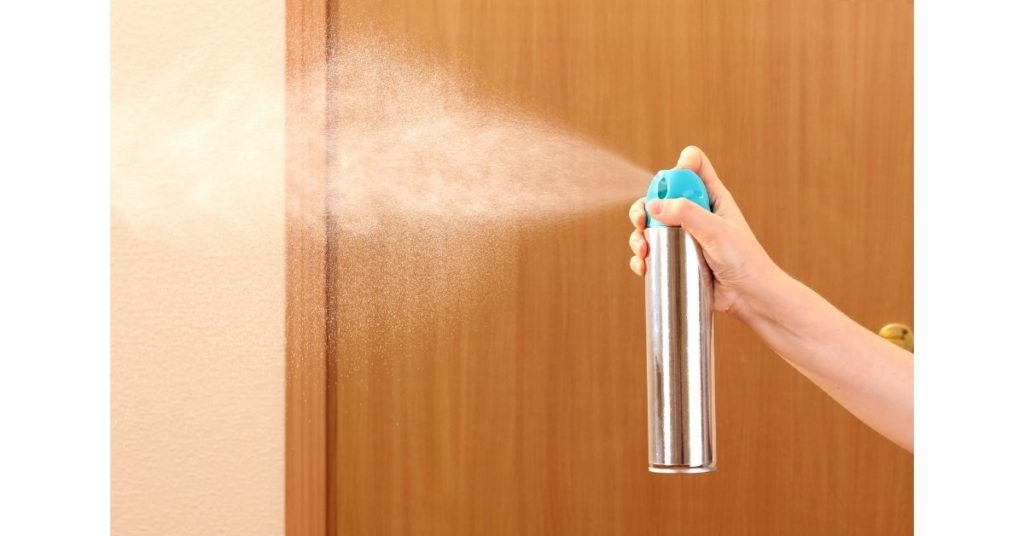
Air freshners and fragrance listed as an ingredient should be avoided. According to a NCBI study they determined:
“A single fragrance in a product can contain a mixture of hundreds of chemicals, some of which (e.g., limonene, a citrus scent) react with ozone in ambient air to form dangerous secondary pollutants, including formaldehyde.”
“These hazardous air pollutants have no safe exposure level, according to the U.S. Environmental Protection Agency. The Consumer Product Safety Commission, which regulates cleaning supplies, air fresheners, and laundry products, currently does not require manufacturers to disclose any ingredients on the label, including fragrances in these products.”
NCBI
The chemicals they found even created carcinogenic air pollutants.
So skip the air fresheners and instead you can use baking soda to absorb odors, open your windows, or put a few drops of your favorite essential oil on a cotton ball and add to your space (keep away from pets, and kids). When checking your personal care products be sure to avoid any products that list fragrance as an ingredient.
Tip #9: Swap Your Candles
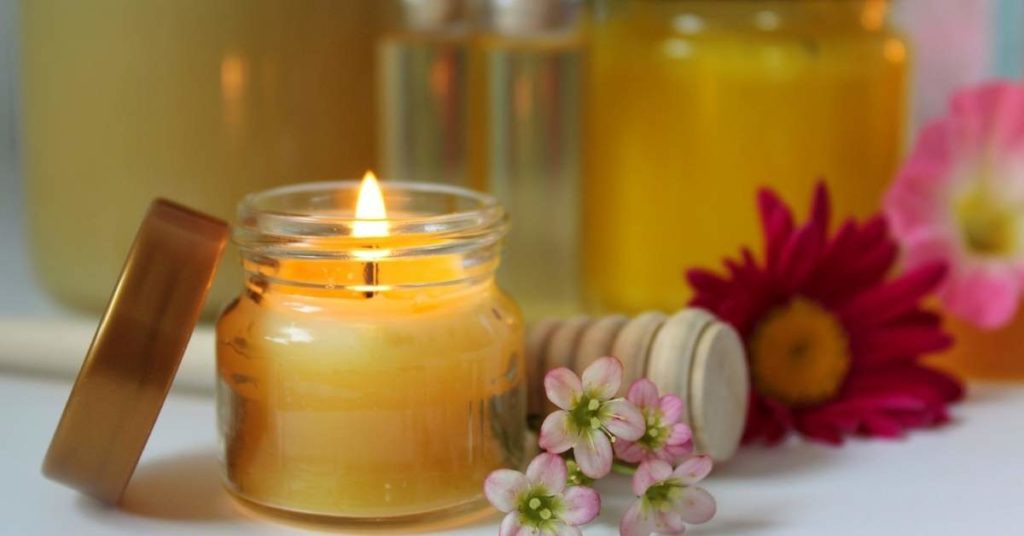
Check your candles and ensure you use candles with healthy ingredients. You should avoid lead wicks, scented candles, and paraffin candles. Instead purchase candles with wicks made of cotton or wood, and waxes that burn “clean” (don’t produce soot) like soy, beeswax, and coconut.
My favorite is beeswax candles and I used to make them myself using this recipe. There are also many people that say it cleanses the air by producing negative ions, but I haven’t seen any formal studies out there.
Another option if you love the candle ambience is to use battery powered candles. I actually do this and LOVE this option. I found myself falling asleep while I had a candle lit so I decided to opt for a battery powered one instead and BONUS I’m not adding pollutants to the air.
Tip #10: Purify Indoor Air with Plants
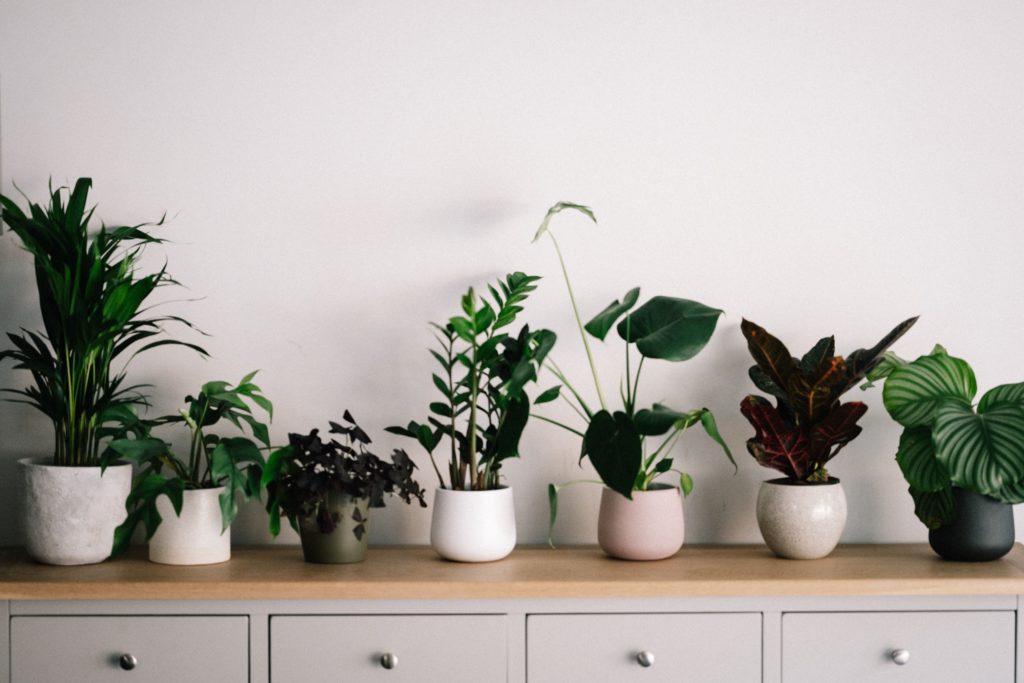
Plants are amazing and one of their benefits is purifying indoor air. They remove toxic pollutants such as benzene, formaldehyde, and trichloroethylene.
In 1989 NASA conducted a Clean Air Study. The study resulted in a list of air-filtering plants. Wikipedia lists the different types of plants and what they remove.
According to this study, other benefits of having plants in your home include more positive feelings, stress reduction, productivity, pain reduction, and quicker recovery after surgery. I know I feel my best when I’m out in nature, so it makes sense that bringing a little piece of the outdoors inside has a positive impact.
Tip #11: Take Your Shoes Off When You Enter Your Home
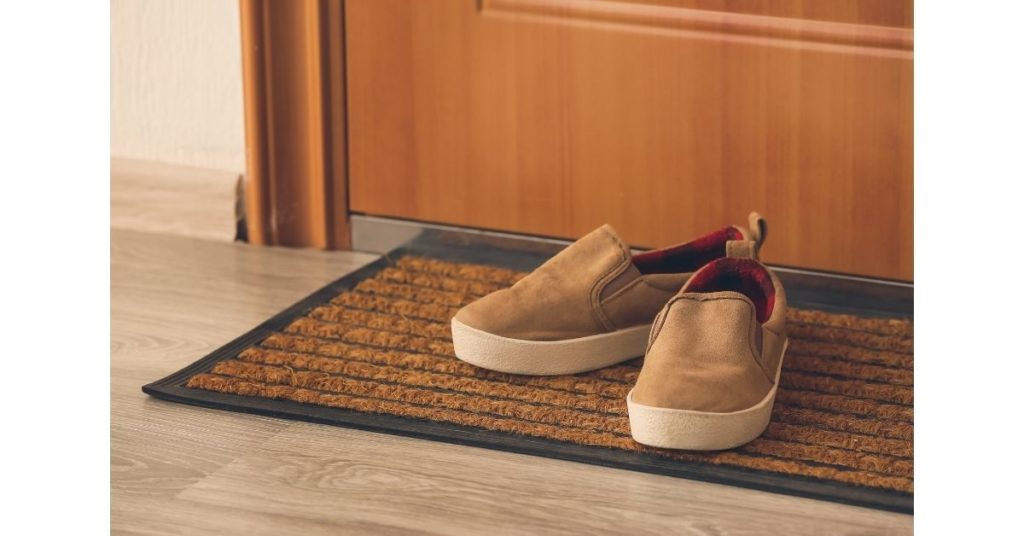
Taking your shoes off is a simple way to avoid bringing toxins into your living space. Here are some interesting studies:
- According to this Baylor University Study, coal-tar sealed pavement can increase cancer risk.
- Science Daily notes a study that pesticides like weed killers can be tracked into homes up to a week after treatment.
There are other benefits to taking off your shoes like not tracking in bacteria, and dirt.
Tip #12: Turn off your internet when you sleep
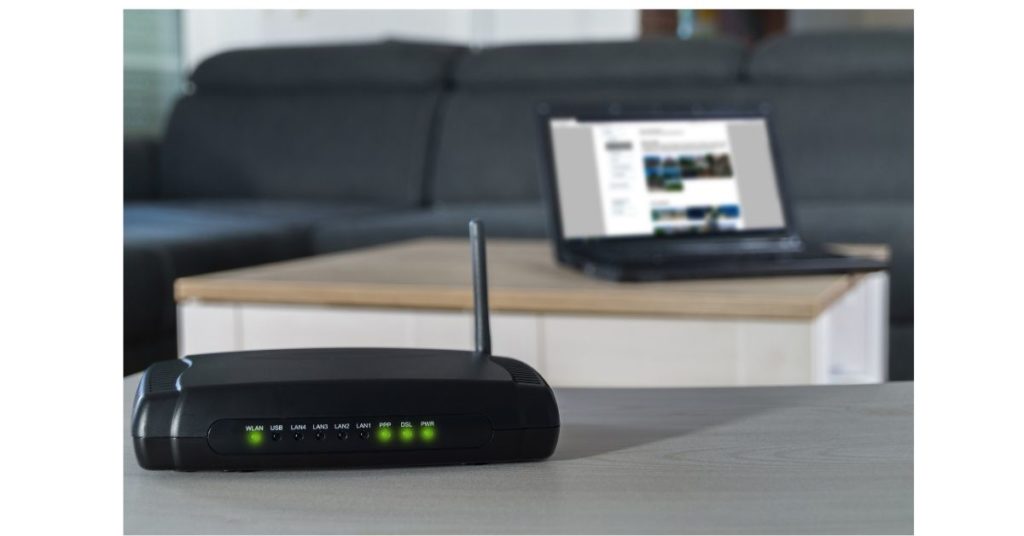
There are mixed opinions on electronic radiation with wifi exposure and human health so if you want to play it safe, you can turn off your internet when you sleep or move your router away from where you or your family spend most of your time. Some routers let you automatically turn off and on your internet every day so you don’t have to manually do it.
Tip #13: Take Action to Help Change Our Toxin Exposure!

Can you tell I love the Environmental Working Group (EWG)!? They make it super easy to take action and put pressure on companies and the government to reduce our exposure to harmful chemicals. Check out their Take Action page to find out ways to support their cause and sign their petitions.
Are you ready to start living a more toxic free lifestyle?

Hi there! I’m Brekke and I hope you found these easy tips for non-toxic living helpful.
If you want to start making steps towards living a more toxic free lifestyle then I have you covered! Sign-up below to get access to my list of favorite non-toxic makeup, skin care, hair care, hygiene, baby, and kitchen products. I’ve tried so many products during the past decade and these are my every day favorites that I highly recommend! Non-toxic, high-performing, and high-quality products.
Head on over to my blog www.kokomoglow.com if you want more non-toxic living tips, tricks, tools, recommendations, and DIY recipes.
Cheers to living a healthier lifestyle!
Brekke

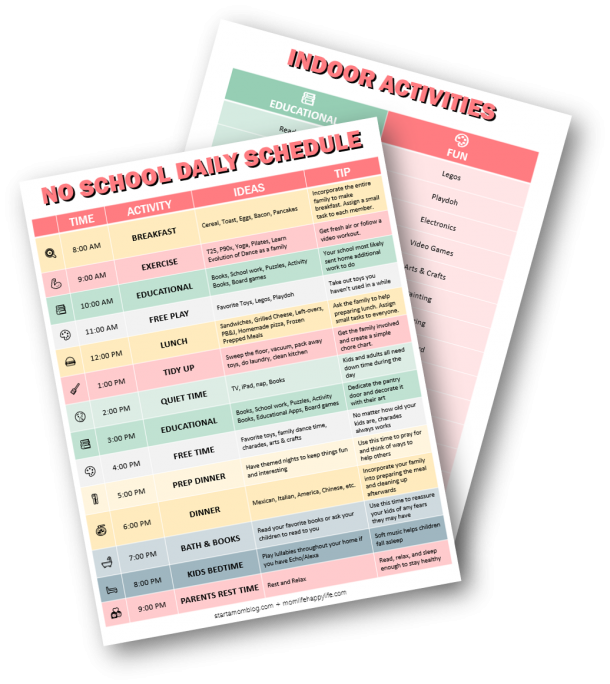


This was an enlightening post, thank you. I don’t know if you’re super paranoid, or I’m super-cancerous, either way, it was an entertaining read 😉 Keep it up. – Sean
Click On The Given Link To Read More Such Post.
Ourtechtime@gmail.com